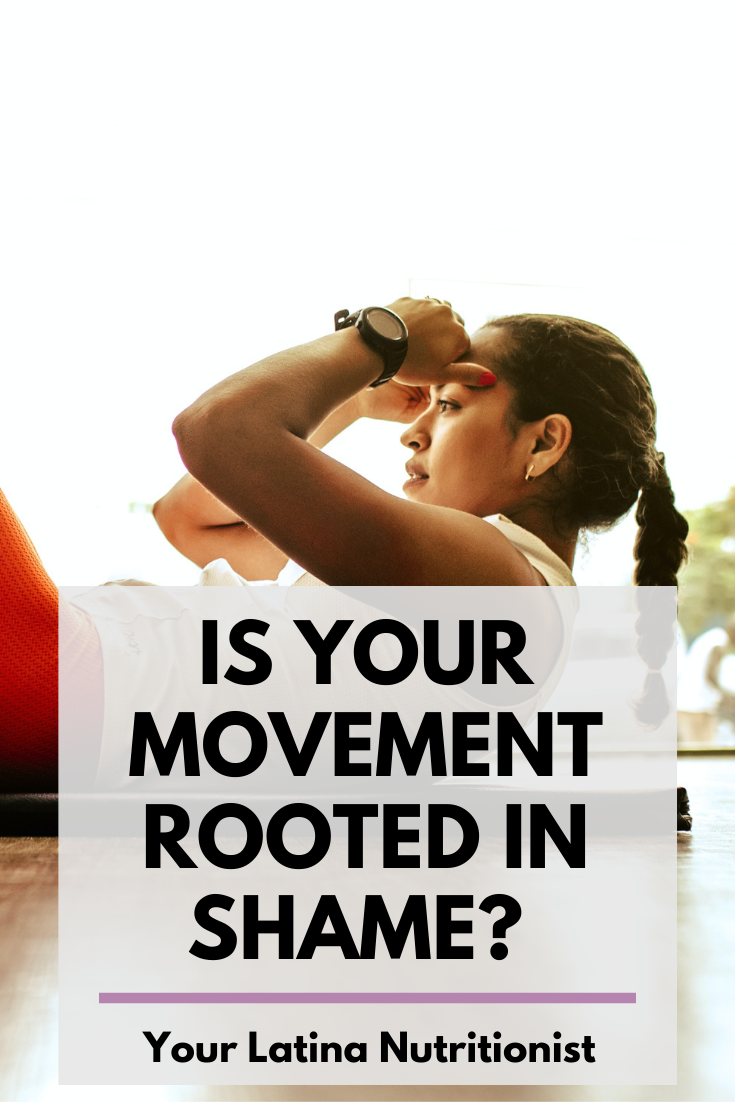Is Your Movement Rooted in Shame?
Written by Isabel Vasquez, RD, LDN
A lot of mainstream fitness and nutrition spaces are rooted in shame. They prey on your insecurities and make you feel bad about your current body. Invoking that lousy feeling and claiming to provide a way to “fix you” becomes their way of motivating you to change.
They promise that if you do their program your body will change and in turn, your well-being will benefit. As anti-diet dietitians, we take a different approach to fitness and nutrition—one rooted in compassion, self-acceptance, and joy.
This allows you to reap all the benefits of food and movement without the diet culture shame and weight-loss based motivators. In this blog, we’ll share what empowerment vs shame look like in movement spaces and how to embrace empowered movement.
Empowerment vs. Shame
Merriam Webster defines empowerment as “the power, right, or authority to do something.”
Shame, on the other hand, is defined by researcher Brené Brown, as, “the intensely painful feeling or experience of believing that we are flawed and therefore unworthy of love and belonging.”
This feeling of shame can certainly be common amongst those who don’t fit the ideals held up by our society.
Just think about it. In mainstream fitness spaces, you’re being motivated by burning calories, losing weight, etc. which implies that how you are now is not good enough and you need to change your body to be happy.
That isn’t true, and shame won’t be a good long-term motivator, not to mention how miserable of an experience that will be (a large part of why it likely won’t be sustainable).
Empowerment vs. Shame In Movement Spaces
Let’s talk about how empowerment and shame could look when it comes to movement.
Movement rooted in shame can include some of the following:
“No pain no gain” mentality
Focus on things like burning calories, losing weight, getting a certain body type, etc.
Lack of modifications offered
Working out regardless of injuries or illness
Believing you have to workout to “earn” your food
Movement rooted in empowerment, on the other hand, can look like:
Plenty of modifications offered
An invitation for you to find what feels best in your body
Neutral language about modifications, not judgmental language that suggests one version is superior to another
Focusing on what you’re gaining (e.g. strength, flexibility) instead of what you’re losing (e.g. weight)
Reminders that this is your time and you can use it how you wish
Learning to discern when to push yourself vs. take it easy
Empowered Movement Feels Better
For movement to be truly fulfilling, it needs to be rooted in empowerment instead of shame. Empowered movement recognizes that you are the only one living in your body, and you know what feels best for it.
Movement isn’t one size fits all, and empowered movement puts the ultimate decision in your hands for what feels best in your body at that given time. You get to decide what kind of movement you wish to engage in. You connect with your body to see how it’s feeling and adjust your movement accordingly.
How to Embrace Empowered Movement
Here are some ways to reframe thoughts that you can incorporate in your journey to finding empowered joyful movement. If you like taking fitness classes, then you can also use this to identify language used by instructors that can reveal their approach to movement.
Instead of “No pain, no gain! Let’s torch off those calories.” → “You decide what’s best for your body. If this doesn’t feel good for your body or is painful at all, don’t do it.”
“If it hurts it’s working. Just think about how good you’ll feel when it’s done” → “Let’s focus on having fun and being present with our bodies.”
“Perfect these moves!” → “You don’t need to take it too seriously. We’re here to practice.”
There are so many benefits of moving that have nothing to do with weight. These can include releasing endorphins, building muscle strength, increasing mobility, building flexibility to prevent injuries, connecting with your body, boosting energy levels, promoting good sleep, building confidence, and more depending on what you do!
Having a safe space to reap these benefits without the shame and fatphobia of traditional workout spaces is so important, especially for those on a journey towards body respect.
For education on how to ADD nutrition to your favorite Latine cultural dishes, make peace with food, and focus on your health without dieting, join our nutrition library for just $27/month.
If you liked this post, you may also like:
Intuitive movement: What it is and 8 tips to embrace it

